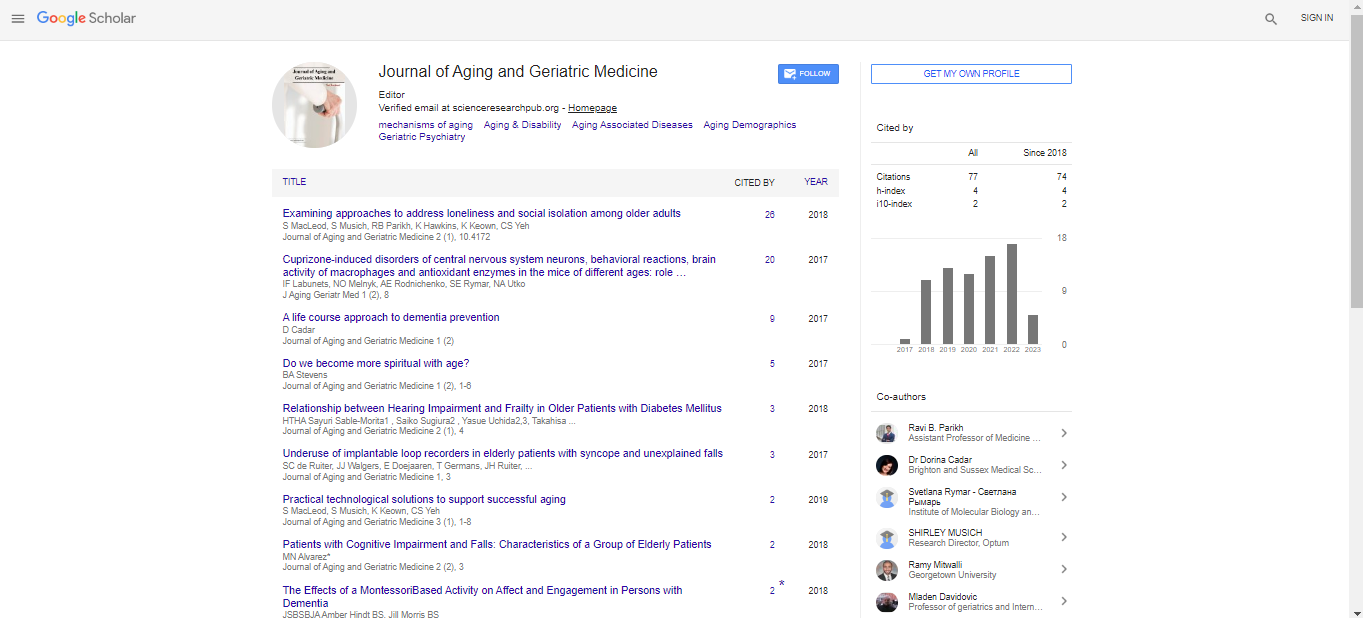Aging-dependent decrease in the numbers of enteric neurons, interstitial cells of cajal and expression of connexin43 in various regions of gastrointestinal tract
Tingyi Sun, Dandan Li, Shilong Hu, Li Huang, Haimei Sun, Shu Yang, Bo Wu,Fengqing Ji and Deshan Zhou
Capital Medical University, China
: J Aging Geriatr Med
Abstract
Gastrointestinal motility is generally coordinated by the interaction of enteric nervous system with interstitial cells of Cajal (ICCs) and gap junction protein connexin43. Aging is a significant risk factor for gastrointestinal dysmotility, but aging-associated differences between different organs and the exact time to start degenerating have remained obscure. Here, we evaluated alterations of interstitial cells of Cajal, enteric neurons and connexin43 expression in the stomach, jejunum and colon in 2-, 12-, 16-, 20- and 24-month-old mice, as well as in aged human colon. Interstitial cells of Cajal, cholinergic and nitrergic neurons within the whole digestive tract were reduced over time, but their loss first appeared in stomach, then in intestine, helping to understand that gastric function was first impaired during aging. The decrease of connexin43 expression occurred before interstitial cells of Cajal and neurons loss, suggesting that connexin43 might be the major target influenced during senescence. Furthermore, changes in expressions of pro-inflammatory cytokines (tumour necrosis factor-α, interleukin-1β, interleukin-6) and apoptosis-related proteins (B-cell lymphoma-2, caspase-3) which indicated “inflammaging”, might contribute to the loss of enteric neurons and interstitial cells of Cajal in aged gastrointestinal tract. Our results provide possible therapeutic time window for beneficial intervention for geriatric patients with gastrointestinal motility disorders.
Biography
E-mail: styj211@ccmu.edu.cn
 Spanish
Spanish  Chinese
Chinese  Russian
Russian  German
German  French
French  Japanese
Japanese  Portuguese
Portuguese  Hindi
Hindi 